United States
Pipe Details
- 12-inch (305 mm) gas pipeline
- Grade API X-60
- Wall Thickness: 0.219 in. (5.5 mm)
- Maximum Operating pressure 1,237 psi (85 bar)
- Operating Pressure 250 psi (17 bar)
- Gouge Defect Size: Axial Length: 1.5 in. (38 mm)
- Maximum Depth: 0.040 inch (1 mm)
- Circumferential Width: 1 inch (38 mm)
- Depth: 6 feet (1.8 m)
Summary
- A 12-inch (305 mm) Grade API X-60 gas pipeline was gouged by a backhoe and required repair to the damaged area which measured 1.5 inch by 1 inch (38 mm by 25 mm) and was 0.04 inch (1 mm) deep
- Trained technicians carried out repair, installing one Clock Spring repair unit
- The repair team also installed 5 metal bands, measuring 1.25 inch by 0.031 (32 mm by 0.79 mm), at each end of the Clock Spring so pigging inspections would be able to identify the repair area
- No hot work was required
A 12-inch (305-mm) Grade API X-60 gas pipeline was gouged by a backhoe and required repair. The damaged area measured 1.5 inch by 1 inch (38 mm by 25 mm) and was 0.04 inch (1 mm) deep.
While the repair itself was important to the company, it also was important to be able to identify the repair area during maintenance inspections once the repair was completed and the line buried. Being able to identify the repair area would prevent time spent determining the disposition of a defect that already had been addressed.There are several methods for inspecting the pipe, the most common of which is running an inspection tool (aka smart pig) through the line. The tools are designed to inspect the steel for imperfections, often using ultrasonic and magnetic flux leakage technologies. Magnetic flux leakage is the most common technology used for this inspection task.
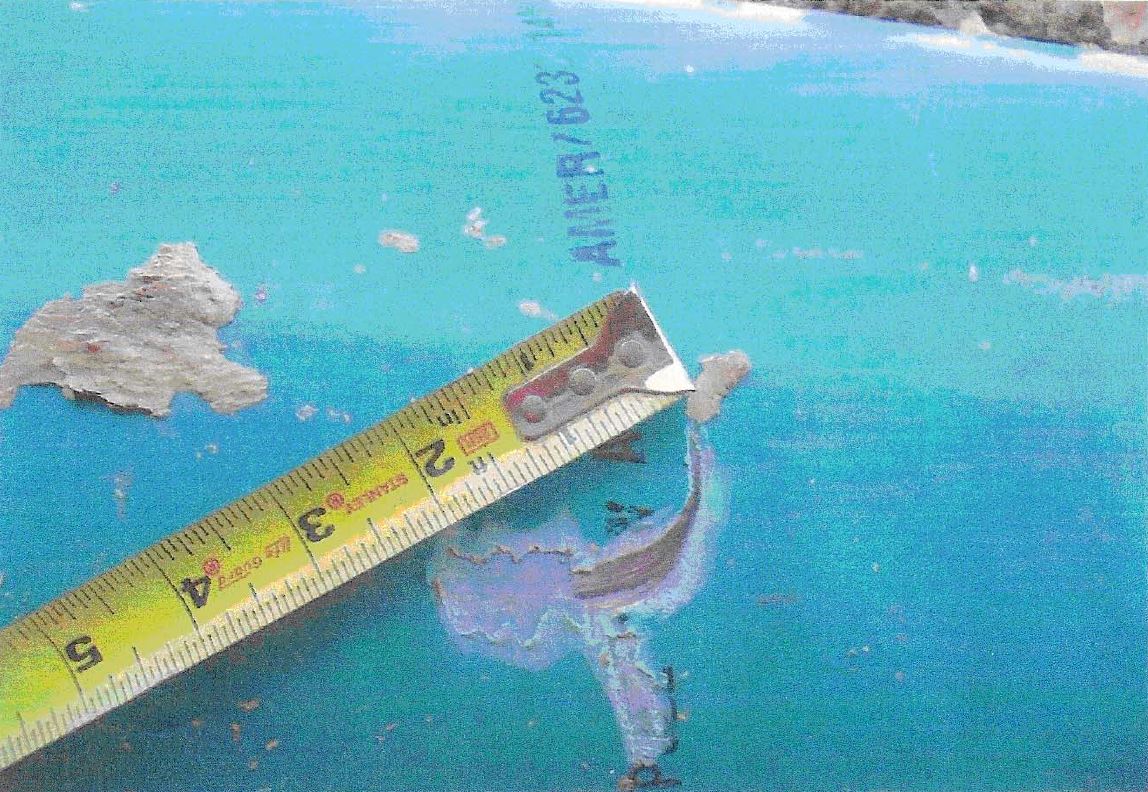
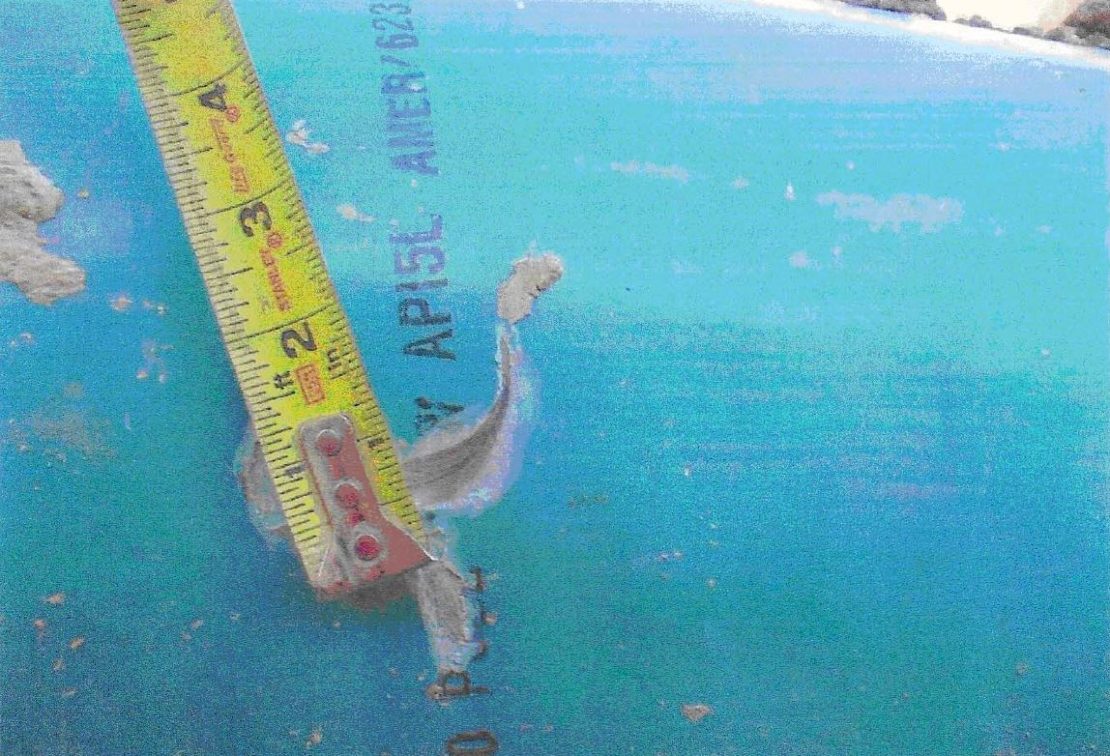
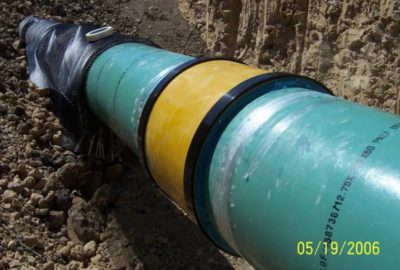
Conventional repairs are identifiable in the data collected by the magnetic flux leakage inspection tool, but traditional Clock Spring composite repairs could not be identified until a minor modification to the installation process rendered them visible to the tool.
In this executing this repair, CSNRI trained technicians removed the stress risers and wire brushed the pipe to remove the fusion bonded epoxy (FBE) coating around the defect to prepare it for the installation. Because the pipe was on a hillside, blocks temporarily aligned the repair area to prevent telescoping of the Clock Spring unit while the adhesive cured. When the cure was completed 2 hours later, the installation team placed 5 metal bands, measuring 1.25 inch by 0.031 (32 mm by 0.79 mm), at each end of the Clock Spring unit to make the repair visible to inspections performed by smart pigs. The bands were separated from the pipe by a thin membrane and coated with tape coating
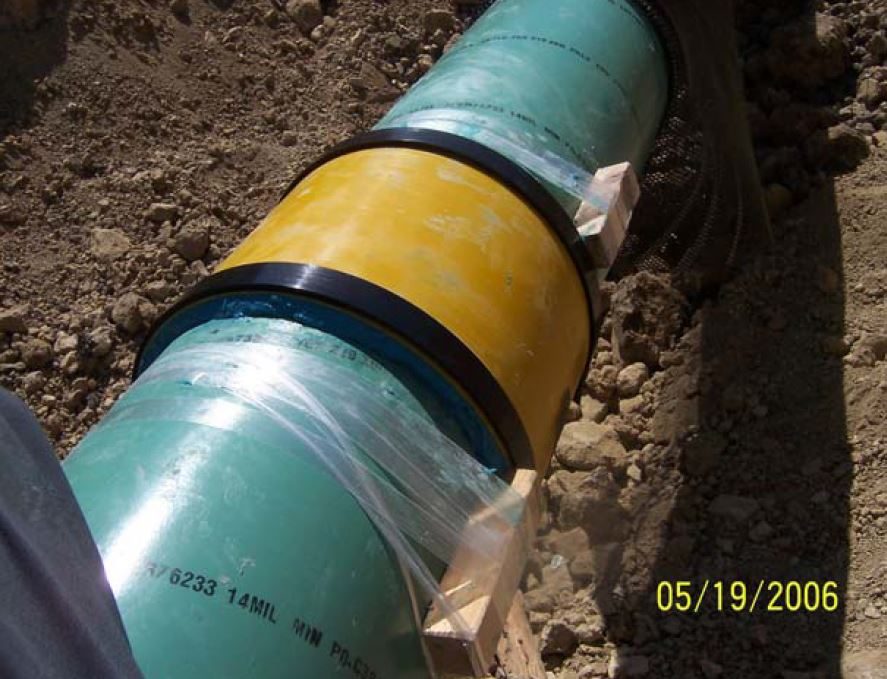
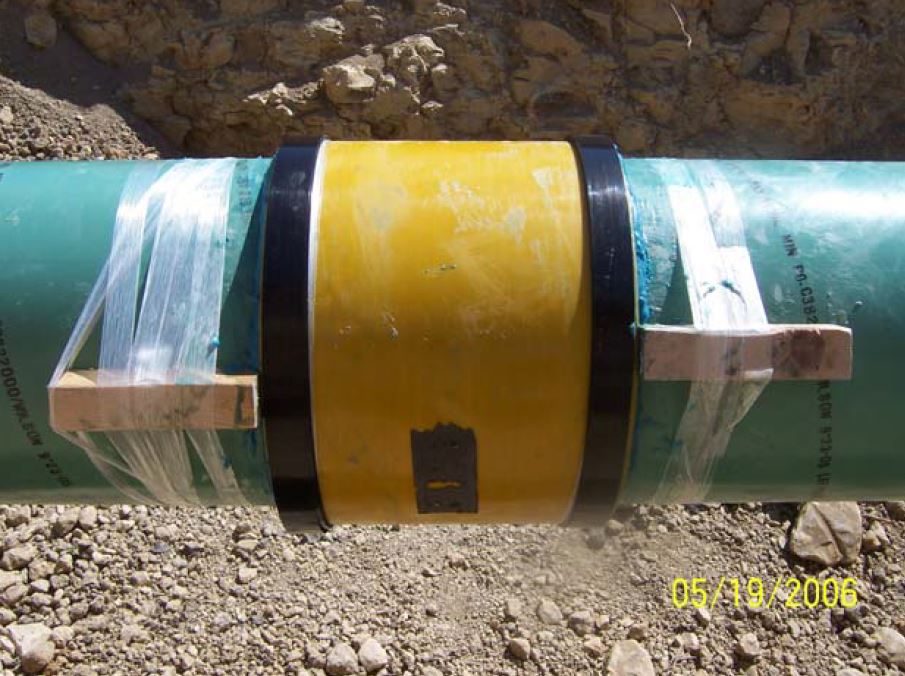
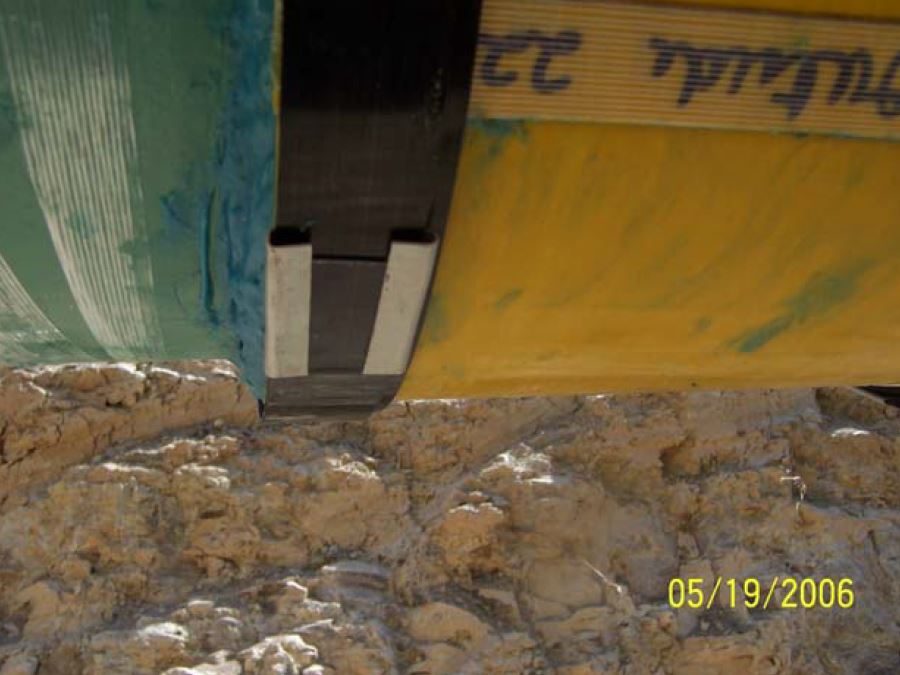
In executing this repair, CSNRI trained technicians removed the stress risers and wire brushed the pipe to remove the fusion bonded epoxy (FBE) coating around the defect to prepare it for the installation. Because the pipe was on a hillside, blocks temporarily aligned the repair area to prevent telescoping of the Clock Spring unit while the adhesive cured. When the cure was completed 2 hours later, the installation team placed 5 metal bands, measuring 1.25 inch by 0.031 (32 mm by 0.79 mm), at each end of the Clock Spring unit to make the repair visible to inspections performed by smart pigs. The bands were separated from the pipe by a thin membrane and coated with tape coating.
This repair was executed by two installers without the need for heavy lifting or hot work.

